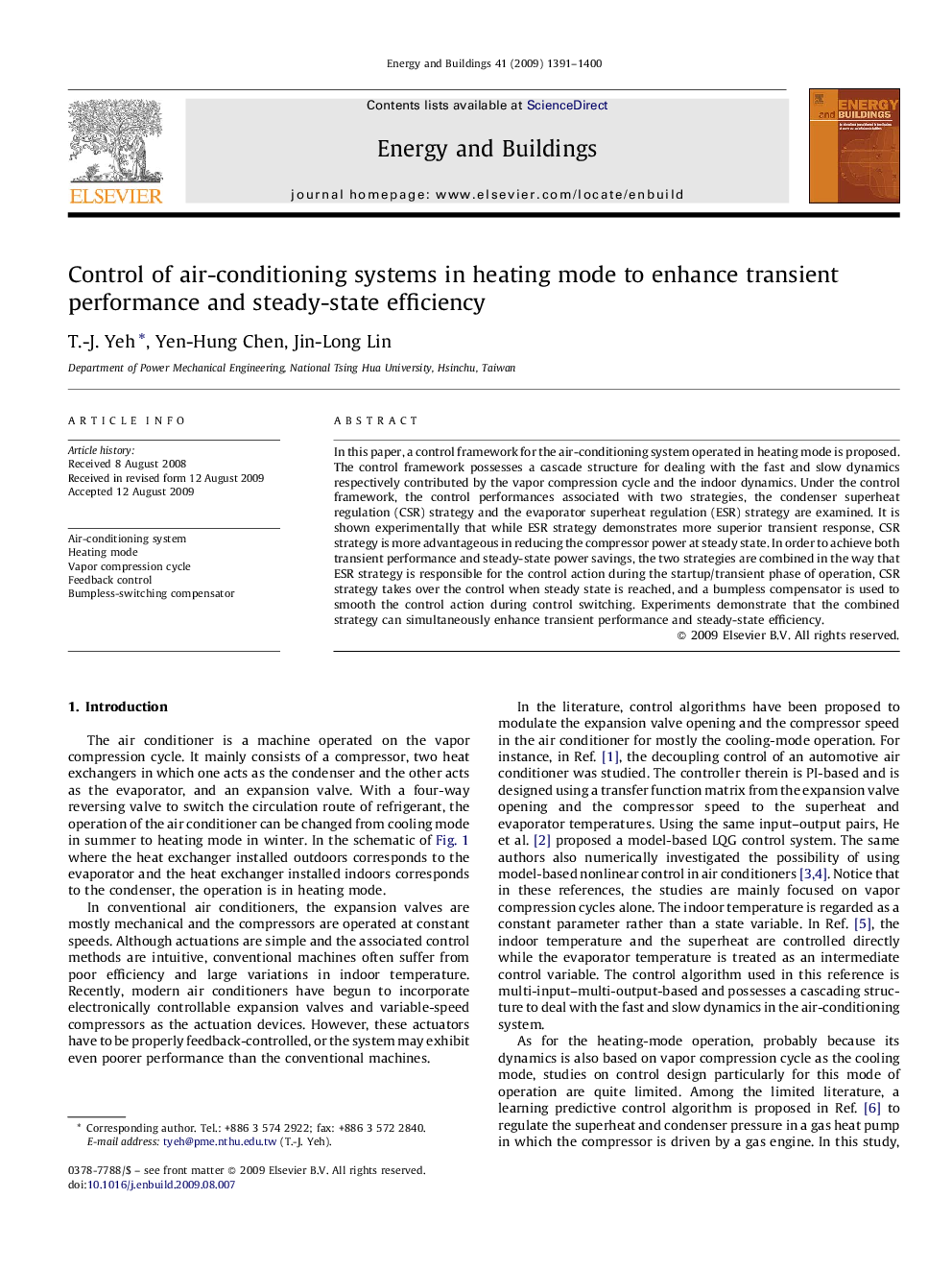| Article ID | Journal | Published Year | Pages | File Type |
|---|---|---|---|---|
| 264723 | Energy and Buildings | 2009 | 10 Pages |
In this paper, a control framework for the air-conditioning system operated in heating mode is proposed. The control framework possesses a cascade structure for dealing with the fast and slow dynamics respectively contributed by the vapor compression cycle and the indoor dynamics. Under the control framework, the control performances associated with two strategies, the condenser superheat regulation (CSR) strategy and the evaporator superheat regulation (ESR) strategy are examined. It is shown experimentally that while ESR strategy demonstrates more superior transient response, CSR strategy is more advantageous in reducing the compressor power at steady state. In order to achieve both transient performance and steady-state power savings, the two strategies are combined in the way that ESR strategy is responsible for the control action during the startup/transient phase of operation, CSR strategy takes over the control when steady state is reached, and a bumpless compensator is used to smooth the control action during control switching. Experiments demonstrate that the combined strategy can simultaneously enhance transient performance and steady-state efficiency.
